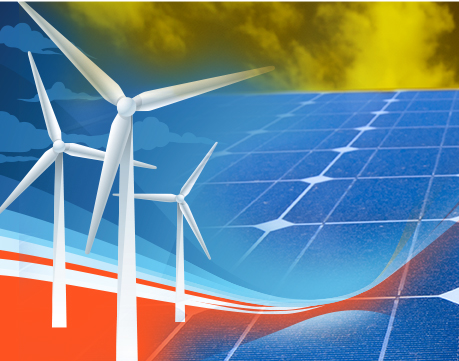Growth Spurt for Hybrid Renewable Energy Systems
Growth Spurt for Hybrid Renewable Energy Systems


As the renewable energy market evolves, experts are recognizing the importance of combining more than one source of power into a hybrid renewable energy system, particularly for remote areas relying on off-grid systems for backup.
In the infancy of renewable energy, many companies specialized in either solar or wind, but soon realized they needed to be knowledgeable in both.
“Typically most small-scale installations focus solely on the initial cost of energy and therefore elect solar panels, says Mateo Chaskel, vice president of operations for Urban Green Energy, a New York City firm offering distributed renewable energy solutions. However, solar alone may not provide a consistent and reliable source of power for all hours of day and night, winter and summer, and additional batteries may be required or more diesel fuel may be consumed than is necessary, he says.
Such a hybrid system not only can lower costs but provides greater reliability and energy security, simplifies any logistical issues of refueling diesel, and is better for the environment.
In remote areas, where an electrical grid is not available, batteries are often used as a backup when wind and sun aren’t doing the job. Energy from the renewable systems is stored in the batteries when the renewables produce more energy than is being used at the time.One form of renewable energy can compensate for the other’s shortcomings, says Chaskel.
Off-Grid Alternatives
Traditionally using diesel generators for power, telecoms have become one of the fastest growing markets for hybrid renewable systems because of rising costs. According to Navigant Research, a market research and consulting firm that provides in-depth analysis of global clean technology markets, the number of off-grid remote mobile base stations using renewable or alternative energy sources to traditional diesel will grow annually from fewer than 13,000 new installations worldwide in 2012 to more than 84,000 annually in 2020 for a total of close to 400,000 new installations during the eight-year period.
One reason for the growth is that a number of factors have contributed to bringing the payback period down to one to five years, making such remote applications very cost-effective, Chaskel says. These factors include the rising prices associated with getting diesel to remote locations and more government regulation on the one hand and falling prices for both solar panels and batteries on the other.
When combining two different systems, there can be engineering challenges. But finding solutions that seamlessly integrate wind and solar does pay off. Since introducing a hybrid capability in early 2012, UGE has made installations at sites on all habitable continents, working with some of the world’s largest telecoms including Claro, T-Mobile, and Verizon. A system installed at a coastal location in China for the Chinese Navy to power a communication tower consisting of an off-grid 4K vertical axis wind turbine combined with 2 kilowatts of solar is saving the Navy approximately $30,000 a year.
At a Verizon Wireless off-grid telecom site in Shasta National Forest, CA, propane was used for power, and UGE installed a system consisting of a 4K wind turbine, 3-kW solar photovoltaic system and 2,500 Ah (amp-hours) battery backup. The site had no access to the grid and could not be refueled for at least four months each year because it was unreachable. Fuel savings are approximately $8,300 annually with a payback period of 4.7 years.
“Throughout the winter, they did not use a drop of fuel on site, and they are currently working on expanding this project to other off-grid sites in California,” Chaskel says.
Spiraling into Control
One key to a hybrid system is an electronics component that is capable of receiving information as well as controlling and monitoring the various renewable energy sources at the same time. Innovation in technology, including new wind turbine designs, capabilities for remote monitoring and the ability to assess and develop sites remotely through weather modeling and site mapping have also contributed to making these systems a reality.
Additionally there has been significant innovation in small wind turbines, which must be capable of spinning nearly constantly throughout their lifetime, Chaskel says. Turbines also must require very little maintenance since getting to remote locations can be a challenge, and they must be able to work in a variety of environmental conditions. For telecom sites, another consideration is to assure that rotating assemblies do not interfere with telecom signals or create undesired vibrations.
While telecoms have been leading the way as they expand and update their networks, other businesses and applications are also benefitting including highway lighting, mining, defense, refrigeration, supermarkets and grocery stores.
“Indeed, now is the time,” Chaskel says.
Nancy S. Giges in an independent writer.
Throughout the winter, they did not use a drop of fuel on site, and they are currently working on expanding this project to other off-grid sites in California.Mateo Chaskel, Urban Green Energy




